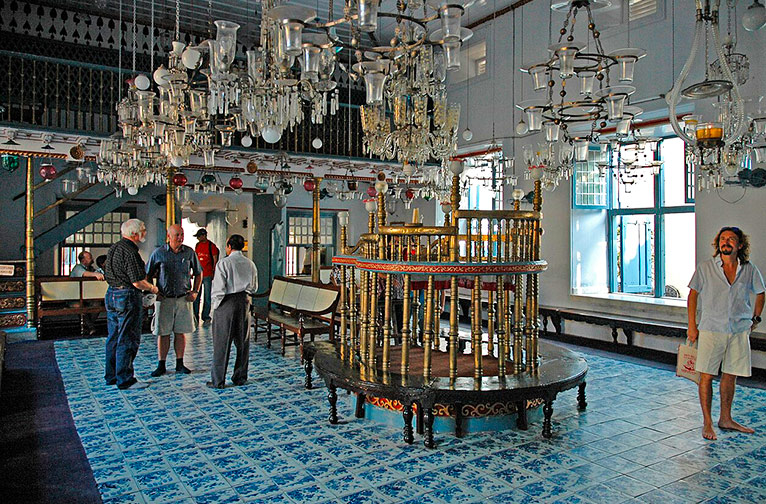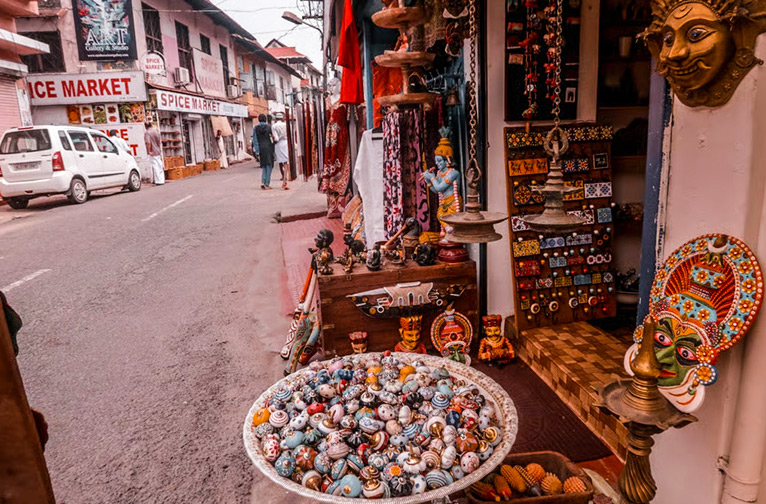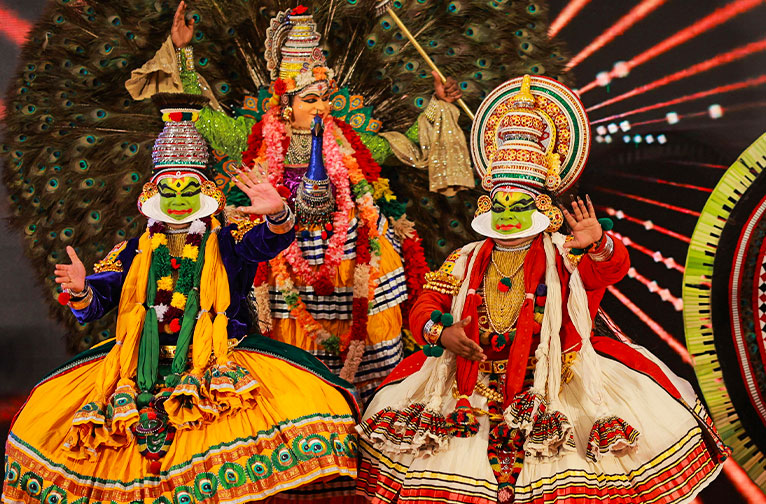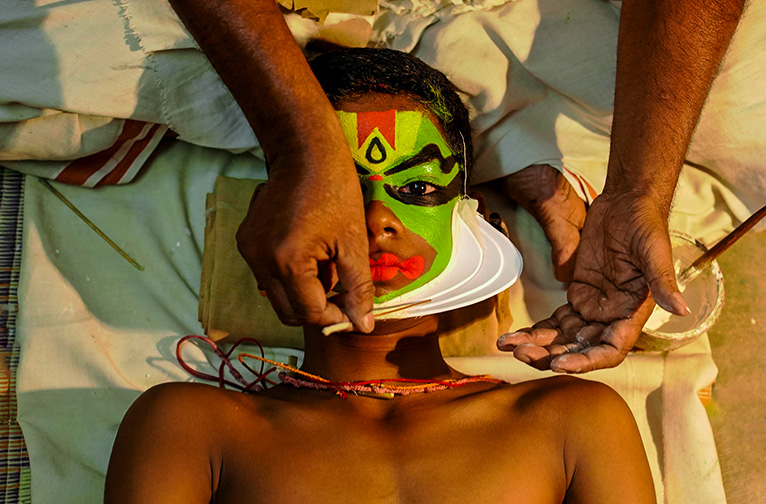The harbour city of Kochi, nestling by the waters of the Arabian Sea on the Malabar Coast in western Peninsular India, has long been a cross-cultural cauldron of many delights, with sailing ships arriving at its shores from Europe, Africa, and China.
This rich tapestry was an intricate weave of its ethnic and religious groups, including the vast local Hindu populace and the Muslim, Syrian Christian, and Jewish minorities. The erstwhile princely state of Cochin is a conglomeration of islands and townships, including the popular tourist hotspots of Ernakulam, Mattancherry, Fort Cochin, Willingdon Island, Vypin Island, and Gundu Island.
Kochi in ancient times served as an alluring gateway port town to the legendary riches of Indian spices. While the indigenous black pepper, or historian Romila Thapar’s ‘black gold’, remained the premier export in its days of antiquity, ships from the Western world returned home laden with other spices like cardamom, cinnamon, and cloves in exchange for gold and silver. High-value timber, such as sandalwood, too, found its way to these Western markets. If that was not enough to keep those ships sailing in, Kochi was also sending out luxury items like ivory, pearls, and semi-precious stones.
An interesting aside to this love of Indian spices are anecdotes of pepper and cloves even serving as currency for commercial transactions at a point in time, back in the heyday of
Rome and Elizabethan England. Did you know that the Romans controlled all the spices through their trading centre in Alexandria, a bustling port city in Egypt, which was under their grip all through the 1st century BC?
The trading merchants—Portuguese, Arabs, Dutch, English, and Chinese—who crossed the seas have all left their mark on Kochi in some form or the other. Kochi witnessed its most prosperous times under the rule of the Dutch, which lasted from 1663 to 1795, before they were ousted by the trade and political manipulations of the East India Company, which held its ground here through the 17th and 18th centuries.
Amongst the legendary names who arrived here were the voyager Vasco da Gama, who discovered a sea route to India via the Cape of Good Hope in 1498, giving rise to Portugal’s monopoly over the spice trade till the end of the 16th century; and St Thomas, one of the 12 apostles of Christ, who arrived by a trading ship to Muziris or Kodungallore, north of Cochin, in about 52 CE. He went on to gather a devout following from the port town's Jewish community and both Jews and Hindus in the Cochin region in general.
Along with the trading goods, the ships brought in the diverse cultural pursuits of their countries of origin—be it religion, social practices, culinary persuasions, knowledge, or artisanal talent.
Muziris Biennale
The port town of Muziris was one of the most important trading hubs on the Malabar coastal belt. Its destruction in 1341 by earthquakes and floods led to it being wiped off the Kerala coast, giving rise to the importance of other harbour towns like Cochin/Kochi. Former warehouses, abandoned factories, and Kochi’s regal Durbar Hall were revived for the city’s inaugural Kochi-Muziris Biennale in 2012. The sixth edition of the Kochi-Muziris Biennale (KMB) will be held from December 12, 2025, to March 31, 2026.
The Kochi-Muziris Biennale is India’s first-ever biennial of international contemporary art. It seeks to invoke the historical cosmopolitan legacy of the modern metropolis of Kochi, and its mythical predecessor, the ancient port Muziris. The Biennale, founded in 2009, was a first-of-its-kind initiative intended to create a platform for dialogue, networking, and knowledge sharing among contemporary art biennials around the world.
Jew Town
On your wanderings in the historic trading hub of Mattancherry, standing cheek by jowl with Fort Kochi, do explore its multifaceted cultural and religious roots. A visit to the lanes and bylanes of Jew Town introduces you to Kochi’s Jewish community, believed to be the oldest in India. Tracing back their foray into Kochi, the community first arrived on the sailing ships of King Solomon around the 1st century BC to Kodungallur, the capital of the Chera rulers. These settlers came to be known as Malabari Jews or Black Jews. The next wave of immigrants came in the form of Jewish refugees fleeing the Spanish and Portuguese inquisitions in the 15th century. They called themselves the 'White Jews', also known as Paradesi Jews in the vernacular.


Of interest here is the 16th-century Paradesi Synagogue, a repository of the faith of the foreigners or ‘paradesis’. Of note here is the Dutch-inspired clock tower with numerals depicted in Hebrew, Roman, Arabic, and Malayalam. The flooring of the synagogue is covered in hand-painted Chinese tiles. Hanging from its lofty ceiling are chandeliers of Belgian glass. Layered in history, heritage, and culture, Synagogue Lane and Jew Town Road offer many excuses to shop for antiques and souvenirs, hang out at bustling cafes, and steep yourself in the rich atmospherics. Do pick handcrafted pieces from Sarah’s Hand Embroidery Shop, which is quite legendary here. Jew Town is also great for picking up spices, ittars, and essential oils. Do pop into the Perfume Museum for a more immersive experience.
Jain traders from the Kutch and Saurashtra regions in Gujarat commissioned the Dharmanath Jain Temple in the Gujarati settlement of Mattancherry back in the early years of the 20th century. Unmissable here is the wonderful artisanal work (stairway, sculpture, carving details) in pristine white marble. The Marathi temple’s caretaker is a Konkani-speaking Kudumbi; the Kudumbi ethnics were refugees who settled here when they fled from the Portuguese invasion of Goa. The Coonan Cross Shrine in Mattancherry attracts people of all faiths now.
Find your way to the lovely 2-storied Mattancherry Palace, a delectable cohesion of Portuguese, Dutch, and traditional Kerala 'naalukettu’ architectural persuasions. Also referred to as the Dutch Palace, it was a gift by the Portuguese to the Cochin royals back in the mid-16th century, whom they were wooing for trading rights. The Dutch influences found their way into the structure when the Dutch started renovating it, at a time when they had a chokehold on the region. Serving as a museum of high note today, it is an excellent place to spend an afternoon, losing yourself in its cultural diversions of the region.
Kalari
Witnessing a fabulous performance of Kerala’s famous martial art of Kalari has to be on your bucket list. Also known as Kalaripayattu, Kalari is said to be one of the oldest martial traditions in Kerala. Its roots lie in the ancient Chinese traditions of Shaolin Kung Fu and Karate. Kalari is marked for the agility of mind and body, achieved through rigorous mental and physical discipline. The techniques involved in this martial art are a combination of skills such as strikes, kicks, grappling, pre-set forms, weaponry, healing methods, and meditation. Also considered a sacred tradition, it is practiced predominantly by Kerala’s warrior castes, the Nairs and Thiyyas of North Kerala. Kalari Gurus or maestros used to train the youth and boys from royal families as well as other communities.
Kathakali
Kerala’s classical dance-drama tradition was for centuries exclusive to male artists who conducted all the roles in a performance. It was with difficulty that female artists have now been permitted to enter this hallowed space. Kathakali, or story play in Malayali, is one of India’s most riveting dance traditions, and most visitors in Kochi try and catch these electrifying performances at least once.


Kathakali is said to also carry traces of the temple dances like Kuttiyattam, and the early martial arts of Kerala. A seamless admixture of dance, music, and acting, each performance dramatises stories largely sourced from the Hindu epics, the Ramayana and Mahabharata. The stylised art form requires the entire body to be used in a performance. It combines the codified use of skilled facial, hand, foot, and eye movements. Each aspect of Kathakali—be it the dance, the expressions, the costume, the elaborate makeup, and music—is highly distinct and contributes to the stylised presentation, which requires rigorous training. It is said that though Kathakali and the Japanese classical dance-drama tradition of Kabuki are distinct in themselves, there is a connectedness between them that arouses your curiosity. Some similarities exist in both stylised art forms. An unmissable similarity you will find is the showiness of both; then there are the extravagantly painted faces, the elaborate costumes and headgear, the expressive gestures, and dance as a medium to narrate a story.
Kochi offers some of the most immersive cultural experiences of Kerala state and the wonderments of India’s legendary Malabar Coast. Go find your own special discoveries of this historic port city with leisurely wanders all over town.